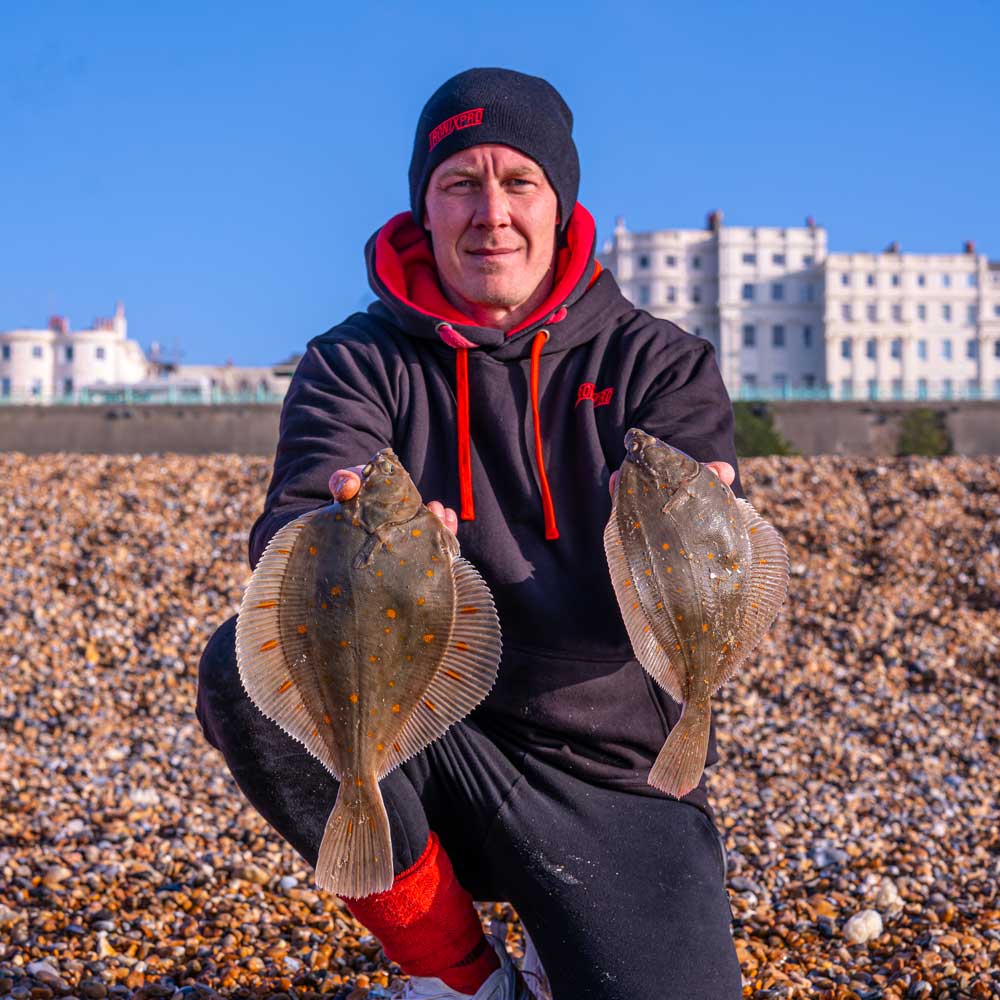Plaice are one of the first fish back inshore after the winter spawning and signal spring is imminent. The past few seasons have seen their numbers increase in many areas with improved shore catches, and this trend looks set to continue.
The average shore plaice will weigh between a few ounces and 2lbs. There is, though, always the chance of bigger fish to 3lbs, especially in the late summer and into autumn period when they’ve had a full summer’s feeding and packed the weight on.
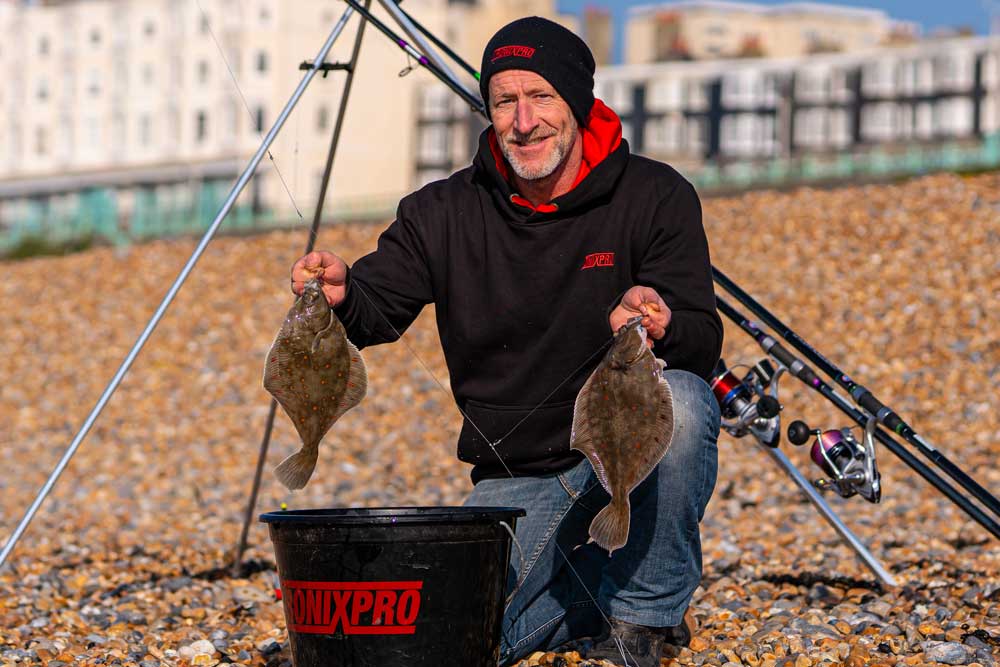
Plaice Fishing Season
In warmer winters with less frost and snow melt, they can arrive as early as February, especially on the south coast of England, but typically, it’s mid-March in most areas. They can be thin and out of condition when first arriving, but quickly put weight on as food supplies increase with warmer weather. Their numbers quickly grow through April and May, peaking between May and August, before some fish gradually push out deeper again.
The peak period for fishing is from April to July, but the bigger fish tend to show later in the year, with September to October good.
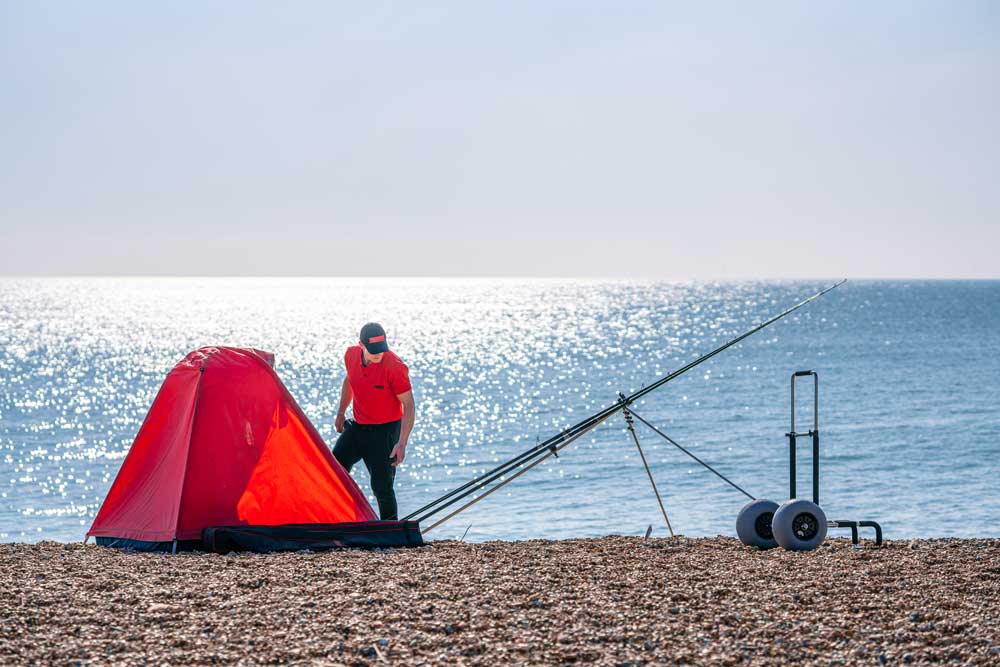
Habitat
Plaice take up station inside estuary channels favouring harbour channels, the main channels of estuaries where the channel narrows then quickly opens out, and especially deeper bends in the channel that form an area of slack water on the inside of the bend providing the seabed is mainly sand or sandy mud. They will also live in the sandy patches close to areas of seed mussel beds. A top spot is where the channel narrows and creates a deeper hole that the tide passes over. The plaice will sit in the base of these and let passing food fall into them.
Beach dwelling plaice again will be caught over clean sand, but the more consistent fishing comes when the ground is broken up by patches of small stone or shingle and again areas where some mussels collect. They don’t need deep water and will move into the shallows just a few feet deep, but you’ll be more successful if you find and target the parallel gutters that run along the beach, areas where there are depressions in the sand, and also spots where small sandbanks are formed by the tide flow. If you can find exactly where the sand butts up to rougher ground, these edges can fish very well for plaice.
Weather and Tides
Look for settled periods of weather in all situations. Minimal wind for a couple of days that settles the sea, some clarity to the water as they don’t like water carrying too much sediment after rougher seas, and a light surf are ideal conditions. Plaice are daylight feeders and will take in bright sunshine, but if you’re fishing in shallower water, you’ll do better to choose a day with some cloud cover to subdue the light entering the sea.
As with most fishing, the best tides are the ones rising towards the biggest spring tides. This increase in tidal movement encourages the fish to move around more as more food is washed from the seabed. This may not be the case in estuaries though, as the bigger tides may flow too fast for comfortable fishing, plus the fish will feed for short periods only. On the smaller tides, they are more active and feed for longer. Once tides peak and begin to fall back to neap tides, then expect overall catches to reduce, but you’ll still catch fishing the flooding tides.
A few fish may feed as soon as the tide starts to flood from low water, but mostly they like a little run in the tide, but not so much full flow, so the middle hours of the flood are likely to produce fewer bites than when the flood is just picking up and slowing down.
Plaice Fishing Tackle
For open beach work, where long-range casting may be needed, look for a rod around 13 to 14ft rated to cast 3.5ozs to 7ozs. One with competition type solid carbon slightly softer tip is ideal for identifying shy bites at longer range, such as the Tronixpro Xenon Zero. The reel for this rod needs to be an 8000-size carrying up to 500-yards of Tronixpro X8 Power Braid in 20lb, plus a 60lb braid shock leader, like the Tronixpro DV8 Reel. In clear seas, changing to a clear tapered leader, like Tronixpro Xenon Tapered Leader can increase the bite ratio. Some anglers prefer to use the Xenon 50/50 Tapered Leader, which features a clear section on the rig end with an orange section on the reel line end.
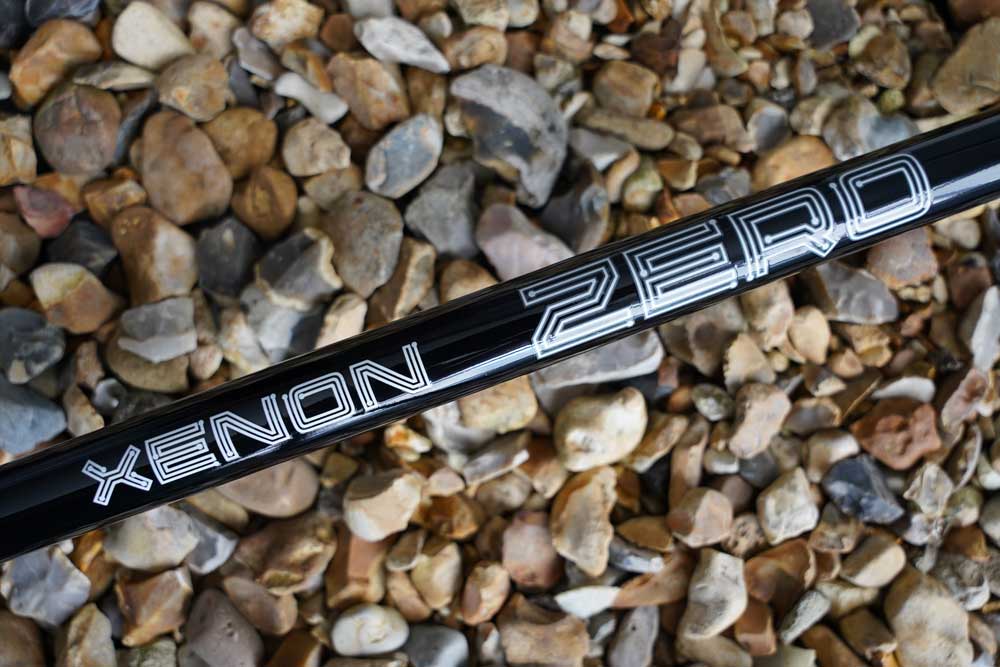
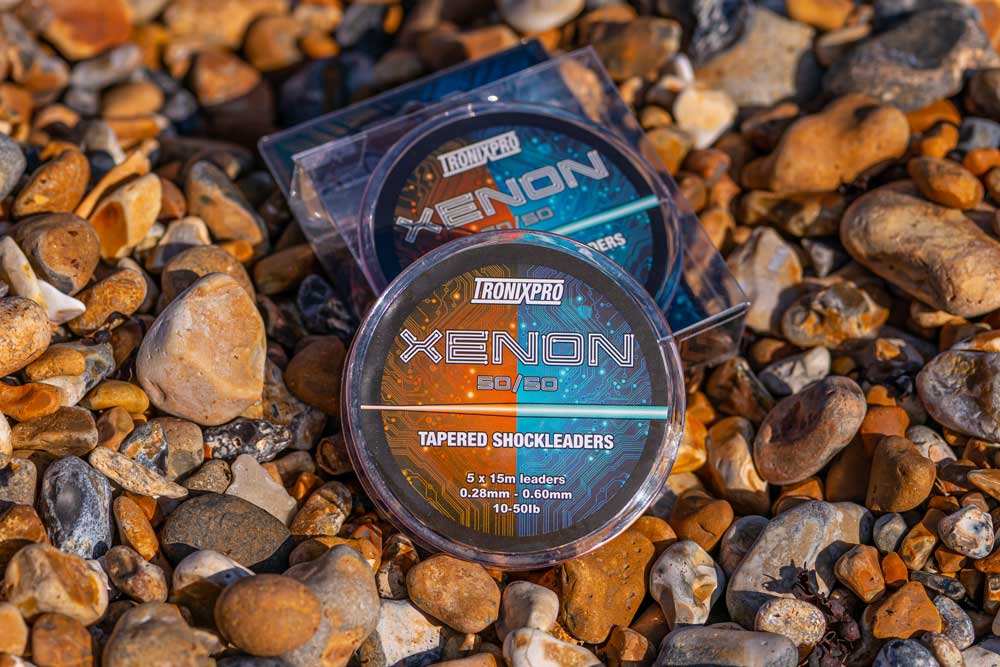
Inside estuaries, you can afford to go lighter. A 12ft rod casting 2-4ozs is ideal, especially those with three alternative tip choices light, medium and heavy. These again highlight small bites and help to hook shy feeding fish, which plaice can be sometimes. A 5000 to 6000 fixed spool reel is perfect for this rod and needs to be loaded with 20lb braid. Add a shock leader of 30 to 40lbs if you’re casting 4oz leads, but lighter 2ozs need no leader with the 20lb braid. We like to use the Tronixpro Banzai Mullet rod coupled with a Virtuoso Air 5000 for this type of work.
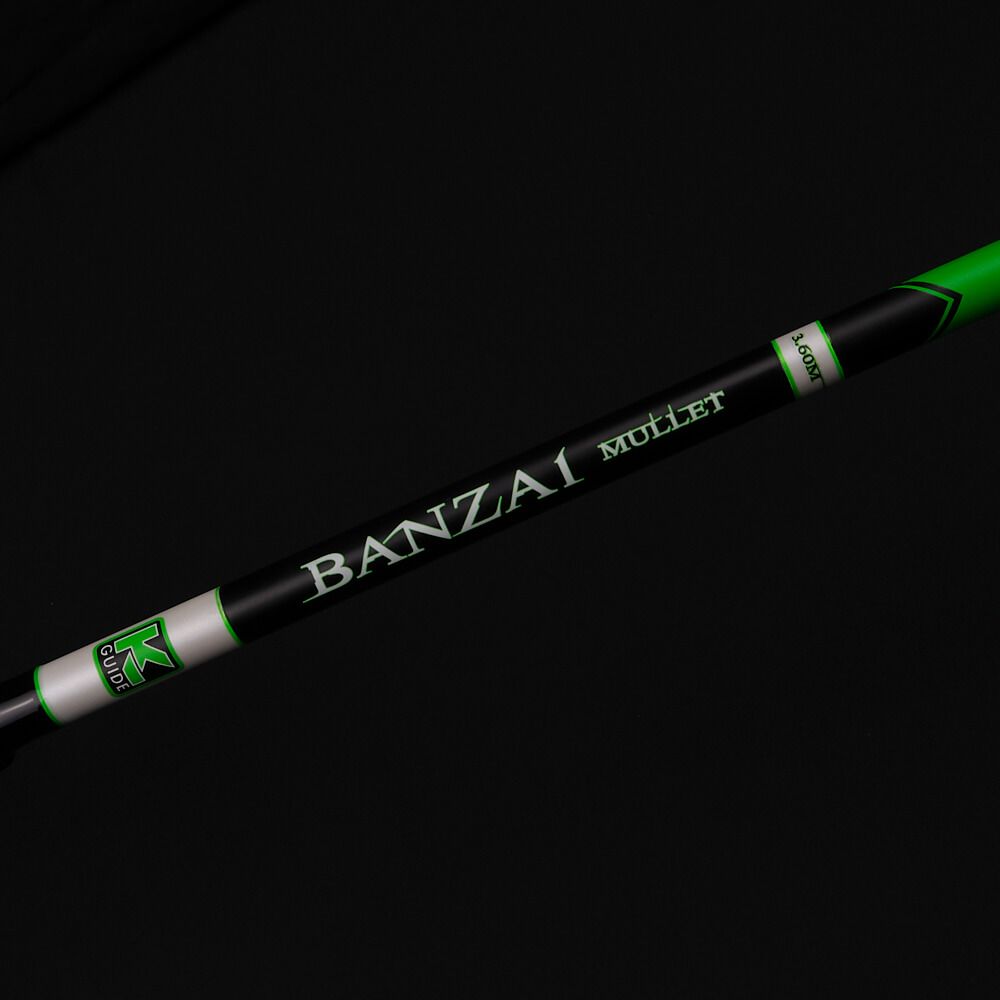
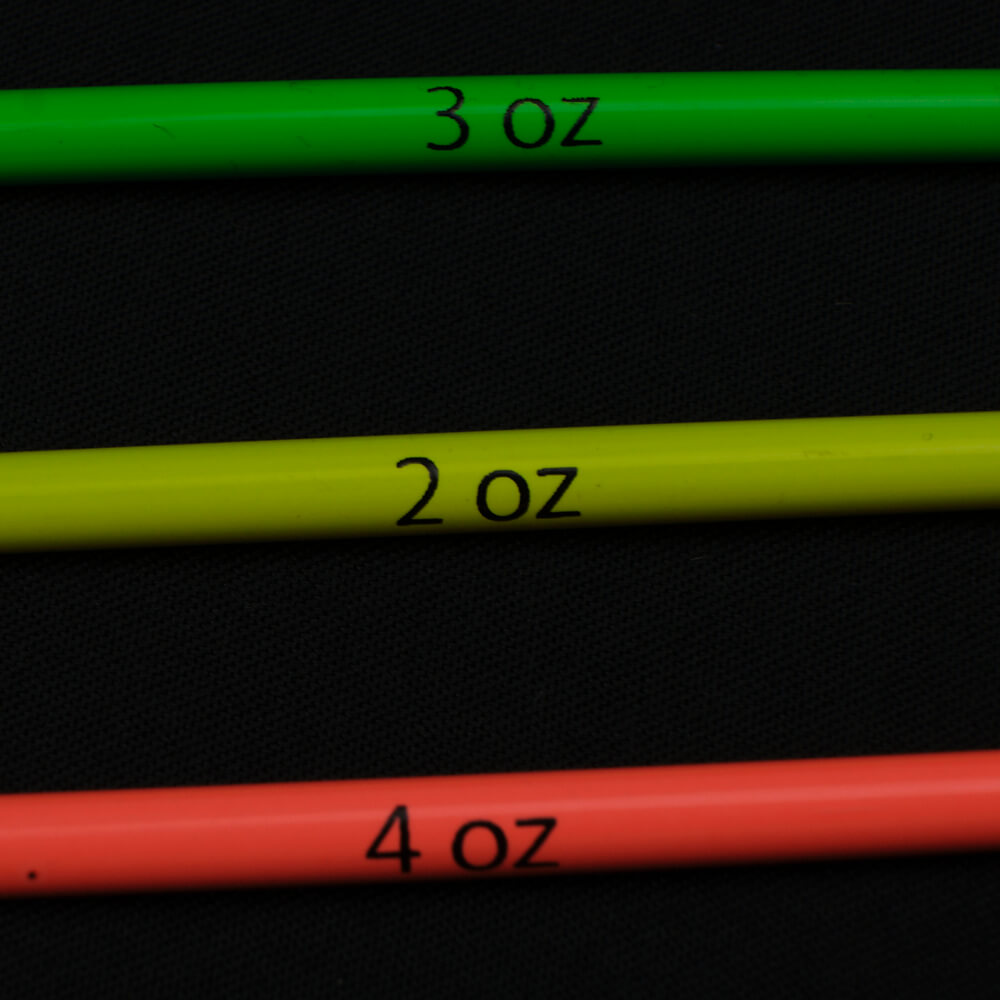
Most common 2 and 3-hook flapper rigs will catch plaice if they’re not too far out, say up to 60-yards. If the plaice are at greater range, then choose a 2-hook clipped up rig with the lower hook length positioned just above the lead link. Even at range, it’s this lower hook on the rig that tends to be taken the most. Plaice rigs are easy to make, but if you’re not comfortable making your own rigs or require a base to work from, our range of AXIA Ready Tied Rigs offer a good alternative.
Keep hook sizes and baits sensibly small. Hooks of sizes 4 to 2 are ideal, Tronixpro Aberdeen, T31 Fine Surf or T34 Worm Surf, are best with the bait just covering the bend and shank of the hook.
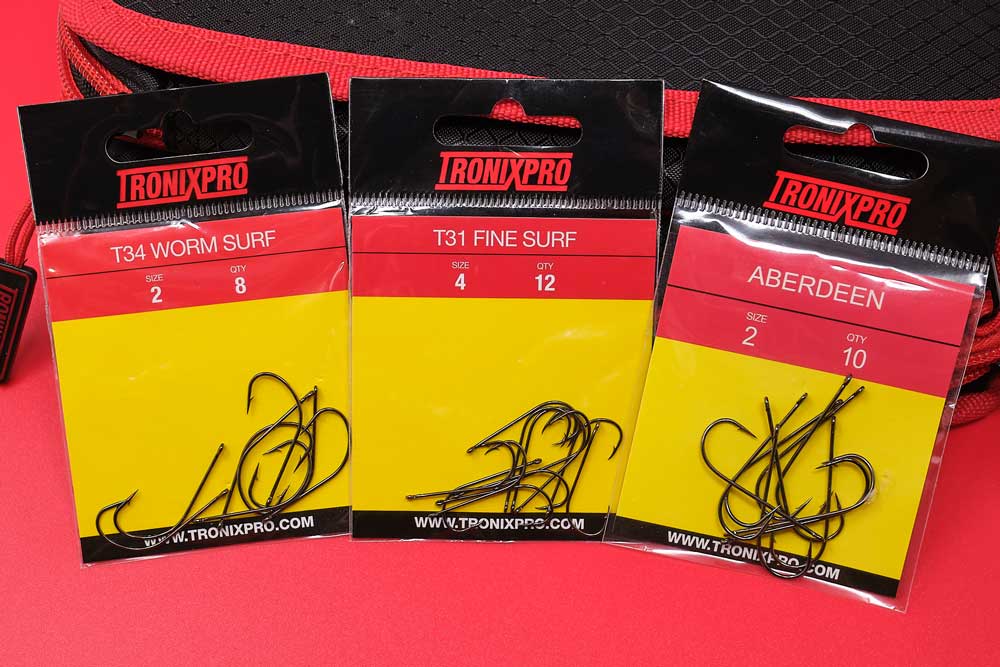
On beaches, fish release wire leads if the ground is broken. If it’s clean, a rolling lead can find fish as it gets swept around by the tide, and this also works well in estuary channels.
Plaice Baits
In the estuaries, the best bait is fresh peeler crab. Peel off all the shell and cut the body into smaller sections, about the size of a 50p piece. Bind this to the hook with bait elastic, looking to form a small sausage shape that the fish can gulp down into the small mouth easily.
Other good baits are blow and black lug, again using just enough bait to full cover the hook with a short section just creeping onto the hook length above the hook. Ragworm is less effective than lug, but does work as a tip off bait below lug, although in some hotspots ragworm can be a top bait. Mussel can be good in estuaries, applied the same way as the crab. Fresh razorfish is also a bait worth considering, especially on open surf beaches. Fish baits rarely catch plaice, so best to leave these alone, bar adding a sliver of squid below worm baits, which can induce bites when nothing else will.
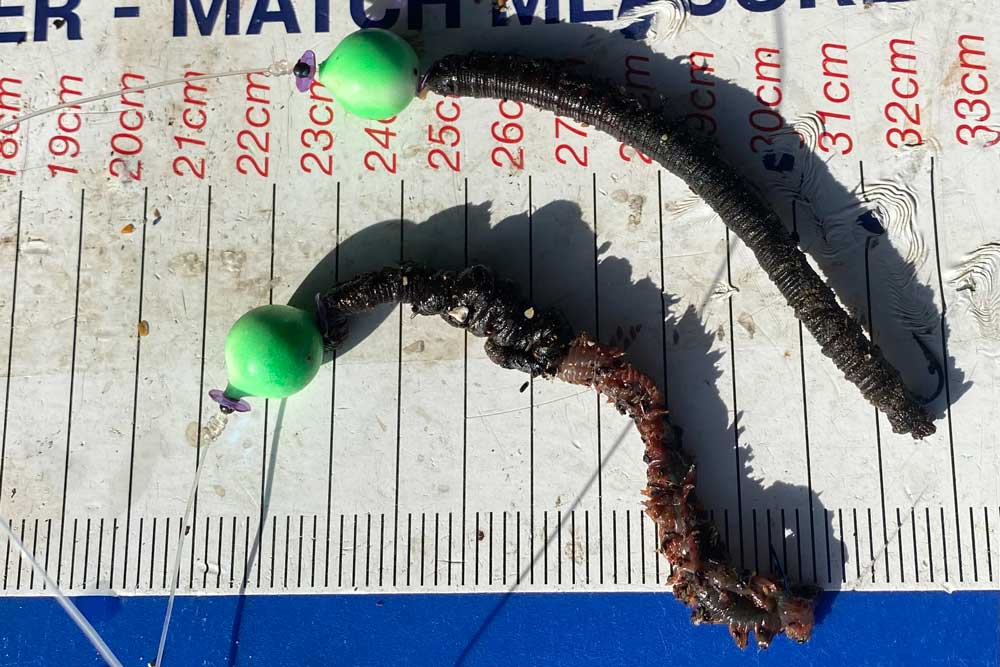
Methods
On the beaches, aim to fish into the gutters and near to any feature for the better catches. It also pays to be mobile in your approach and be prepared to occasionally move up or down the beach. Moving just 20 to 30-yards might be enough to put you on a small group of fish. It’s little known, but plaice do form small groups and when one moves, others move with them. Therefore, it’s often said that if you catch one plaice, you’ll catch another.
Don’t keep casting the same distance all the time. Vary it from long range to medium range and even tight in, though mostly the fish are a good 40-yards or more out. Usually more! This is where fishing two rods side by side works in your favour, as you can vary the distance on each rod until you find the feeding band. We have a blog covering fishing with two rods here.
Also experiment with baits. Plaice are a fish that will respond to one particular bait at times and if you can find the main bait they want to feed on, then fish it on all hooks, this is how you take the bigger catches.
Inside the estuaries, look to find the areas within the main channel where the tide flow is deflected and weakens. The plaice will sit on the sandbanks in this area, then move off to feed as the tide flow begins.
Plaice in estuaries again tend to group in, in certain areas, and you need to find these. One way to do this is to use a lead just light enough to let the tidal pressure on the line sweep the lead and bait round and downtide. Eventually, you’ll find that the lead will drop into a hole or simply stop moving. The lead has found a depression in the seabed and that’s exactly where the plaice are likely to be.
To bead or not to bead, that is the question? In clear water, a sequence of black and green 5mm beads above the hook can be deadly. In coloured water, try brighter colours, such as red and white or orange and white. However, always bear it in mind that some days beads work very well. Other days, a plain bait with no beads will catch far more fish. Don’t be set in your ways when plaice fishing, keep ringing the changes!
